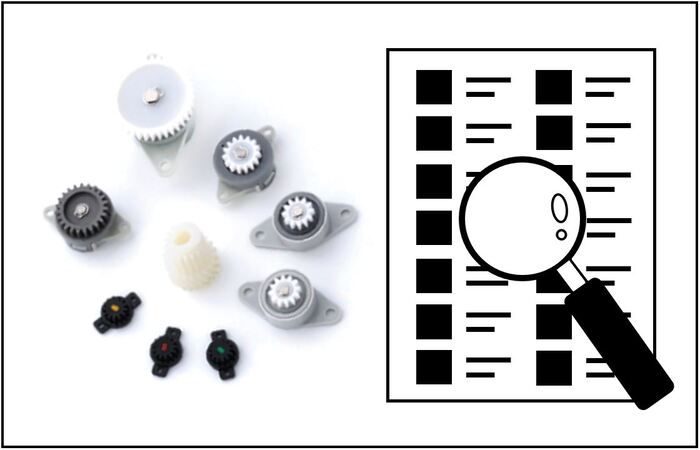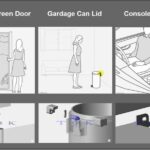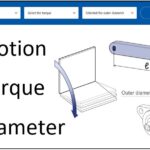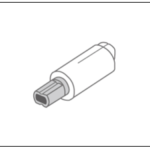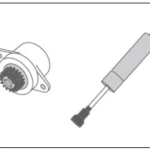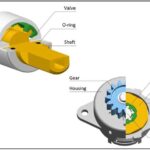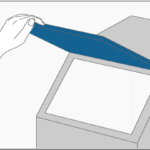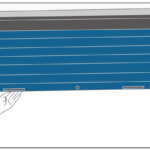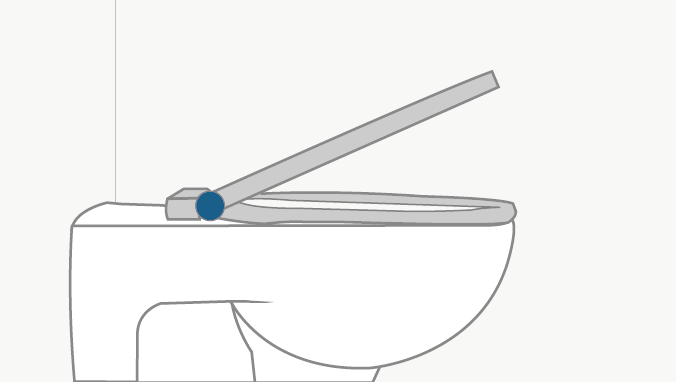
TD129 is a small diameter and high torque rotary damper with an axial length as short as possible compared to existing products with an outer diameter of ø16 mm and a torque of 4 N・m.
This rotary damper was developed based on the request of the European sanitary industry. In this article, we introduce the development story and the features of TD129.
Development background of small diameter high torque rotary damper TD129
The development of TD129 was triggered by a request from a customer who has been continuously purchasing the product for toilet applications. They needed small diameter, high torque, and reasonably priced rotary dampers that would not affect the design to provide high quality toilets with heavy lids. This development was expected to result in a new line-up of small diameter high torque rotary dampers for TOK, and also to be applied to products from customers who have never been able to mount rotary dampers.
The European customer requested the new rotary damper to comply with the NF standard (D12-207/NF240), a French industrial standard, as a condition for adoption, and the durability test based on this standard was a different condition from the usual one.
TOK durability conditions
For TOK, test conditions (1) and (2) are carried out separately. (0° is the closed position)
(1) [0°⇒110°⇒return to 70° and release ⇒ free fall] for 50,000 times.
(2) [0°⇒110°⇒70° to 0° in 1 sec] continuously in 5 sec for 13,000 times.
NF standard durability conditions
The durability test condition of NF standard has both of free fall and forced operation, with a total of 30,010 times.
(a) [0°⇒released from 85°⇒free fall⇒0°] for 50 times.
(b) [0°⇒85° to 30 N load (load position 205 mm from the center of rotation) ⇒ 0°] 50 times.
・The above (a) and (b) are performed as one set of 50 sets, for a total of 6 cycles.
・When the average of 10 free fall measurements taken under the conditions of a) for each cycle is 2 to 15 seconds, the test can be continued.
・The free fall measurement is applied the first 10 times of the next cycle, so the total number of openings and closings is 30,010 when the 10 measurements after 6 cycles are added.
([(50 free fall + 50 forced closing) x 50 sets] x 6 cycles + 10 final measurements)
While the total number of opening and closing in the durability test according to the NF standard is less than our standard conditions, the test condition is harder than under TOK standard conditions since the free fall durability test and the forced durability test are combined. In addition, as the NF standard requires opening and closing motion within 85°, emphasis was placed during design on improving the response (designing a small backlash) when switching the direction of rotation.
The specifications required at the time can be summarized as follows.
・Small diameter (outer diameter φ16 mm)
・High torque (4.0 N・m)
・Compliance with NF standards
・Cost
To meet these challenges, a durability testing machine that could operate under NF standard conditions was built in-house to meet NF standards. The common solutions could be applied to the remaining issues although we had difficulty in studying the shape and reducing the number of parts during the design process. The next chapter introduces the solutions to the issues at the time.
Solutions by material and parts configuration
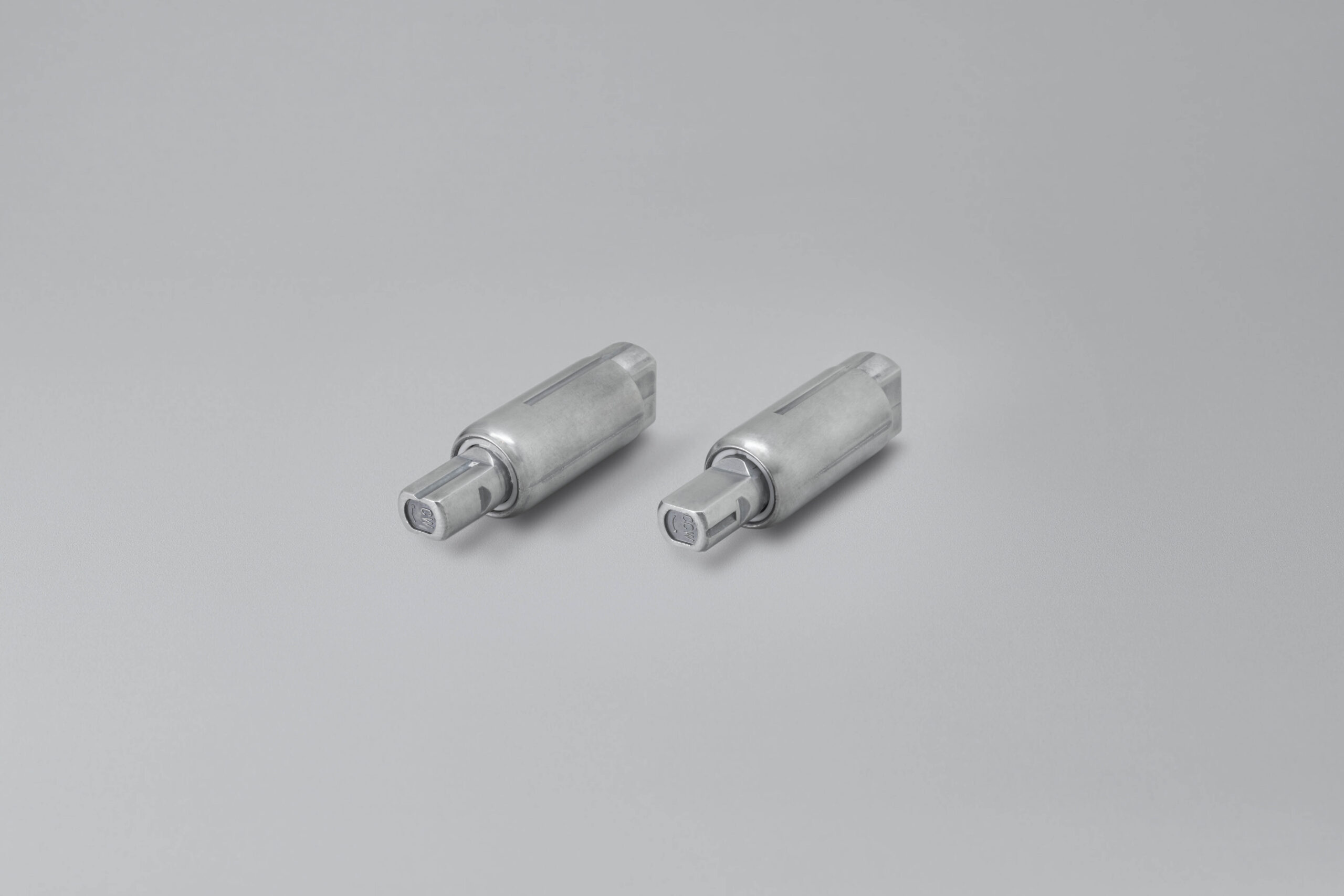
To meet the target of securing a torque of 4 N・m while maintaining an outer diameter of φ16 mm, it was clear that selecting resin as the material for the housing and shaft was not suitable in terms of mechanical properties, so zinc die-casting was chosen for its good mass producibility and relatively high mechanical properties. The housing inner diameter was designed to be as large as possible to obtain the highest possible torque, but the housing was too thin-walled and cracked, so the wall thickness was increased to optimize the housing. When a straight groove was made on the exterior as a cut-out in a relatively thick section, a new customer asked for this section to be used as a detent, and the cut-out design was also improved.
Solutions by reducing the kind of parts and reviewing the parts design
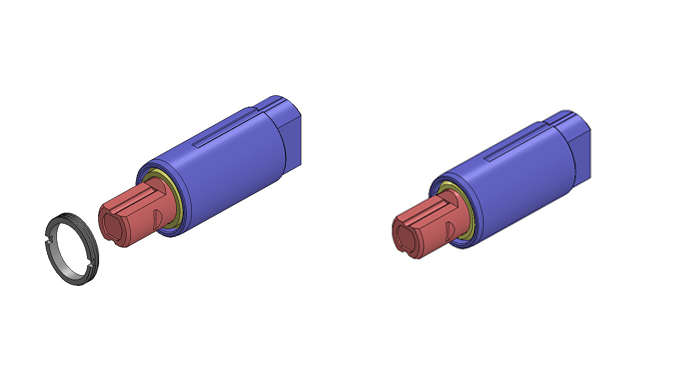
As zinc die casting, which is more expensive than resin, was used as the main material, it was necessary to reduce the cost of the parts themselves and the kind of parts. Resin parts are usually assembled by welding or tapping screws, but as welding is not possible with zinc die-castings, ring screws or internal collapse caulking are used to assemble the parts. When the housing and cap are threaded, they can be securely fastened, but it takes higher cost for the thread machining. Additionally, there is a risk of cracking due to stress concentration in high torque rotary damper, such as this project. On the other hand, assembly by calking eliminates the need for a ring screw, reducing the number of parts by one, but there is a concern that the internal pressure generated by the oil each time the rotary damper is used may loosen the calking part, leading to a reduction in durability. After assessing the advantages and disadvantages of each method, we chose the caulking method as the one with the greatest potential. At the beginning of development, the caulking part was set to 16 mm diameter, the same as the outer diameter, and trials were carried out with a thick wall to prevent loosening due to durability, but after caulking, the shape spread over both the outer and inner diameters, with the outer diameter falling outside the dimensional standard and the inner diameter not being fully tucked. This problem was solved by remodeling the shape of the housing involved in caulking, but a new problem occurred when the pressure was too strong, the housing cracked, and when it was too weak, it did not tuck inwards. Finally, by reviewing the conditions of the riveting machine and changing the shape of the horn when applying pressure, we found the optimum internal calking shape and were able to meet our standard durability of 50,000 cycles. Incidentally, this technology is also used in our SR3 rotary damper, which was subsequently launched.
Summary of Small diameter high torque rotary damper | TD129 development story
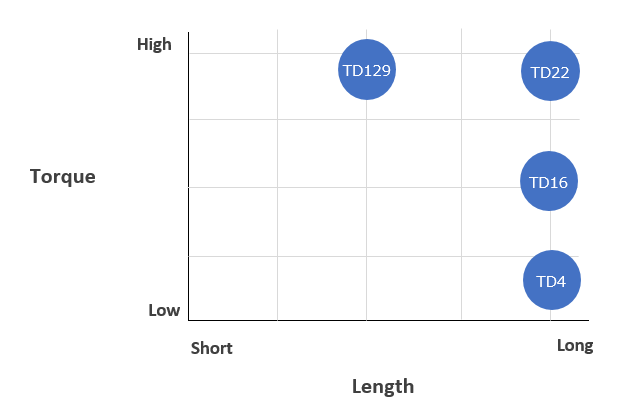
We have several types of rotary dampers with an outer diameter of ø16 mm, but TD129 introduced here has a shorter axial length than TD4 and TD22, and the torque is equivalent to that of TD22, making it the highest torque rotary damper with a ø16 mm outer diameter on the market. The detent shape is finished with a straight concave groove that is easy for customers to insert when mounting and is currently used in toilets and refrigerator.
TOK not only supplies standard products but also carries out a number of customized designs that is referred to standard products to meet the desired specifications. Please feel free to contact us if you require customized products.
Related article
The needs for high torque and 16 mm outer diameter rotary dampers
[Note]
During the development of TD129, the customer who originally requested TD129 was supplied with a customized rotary damper made of resin and compliant with NF standards, and TD129 is currently not used. Therefore, TD129 has been put on the market after ensuring durability based on our standard durability test conditions, and as of October 2023, TD129 is not compliant with the NF standard (durability check not conducted).
Please wait until the contact form is indicated.
If you cannot find the contact form in spite of waiting, please let us know from this link.

